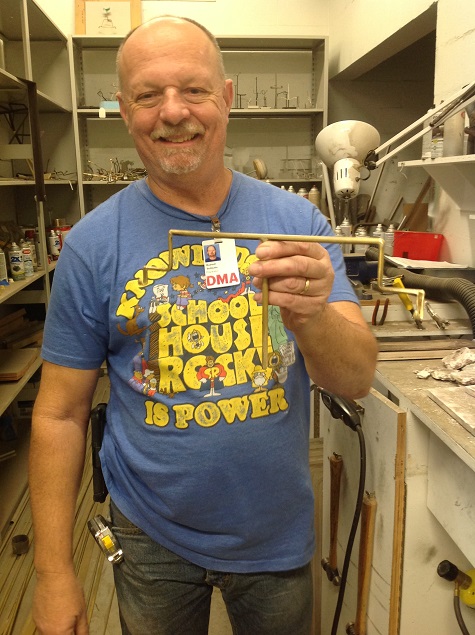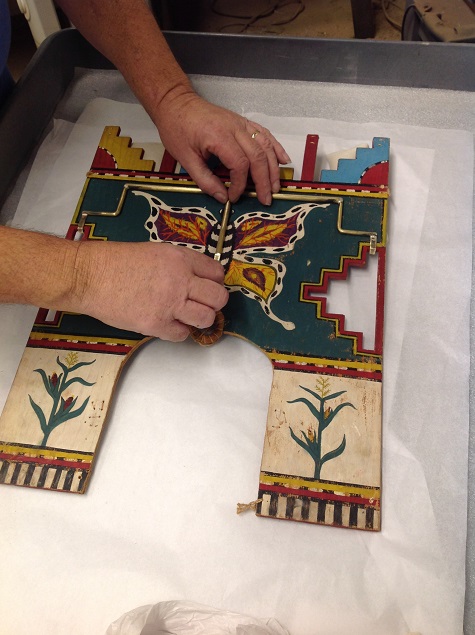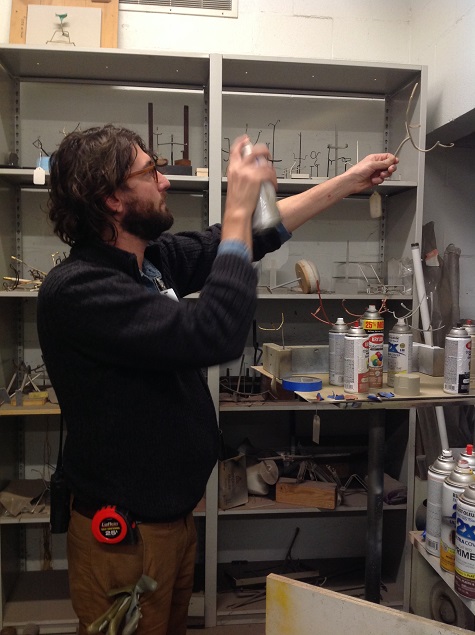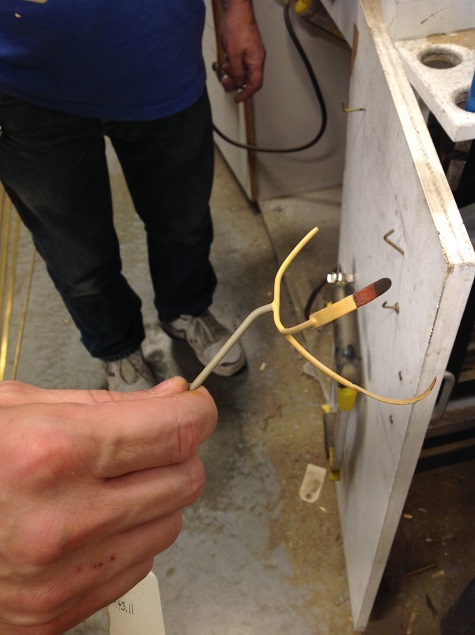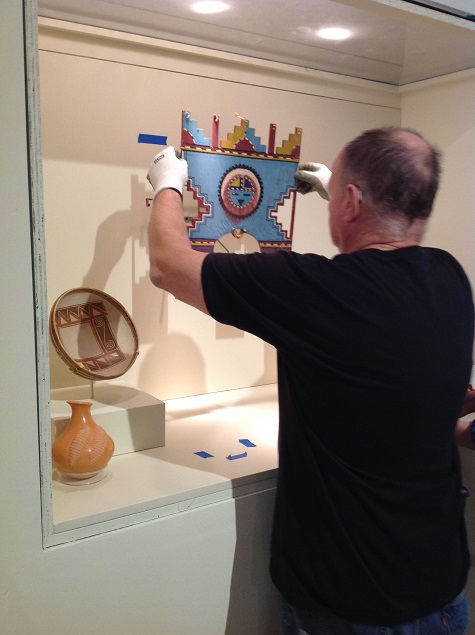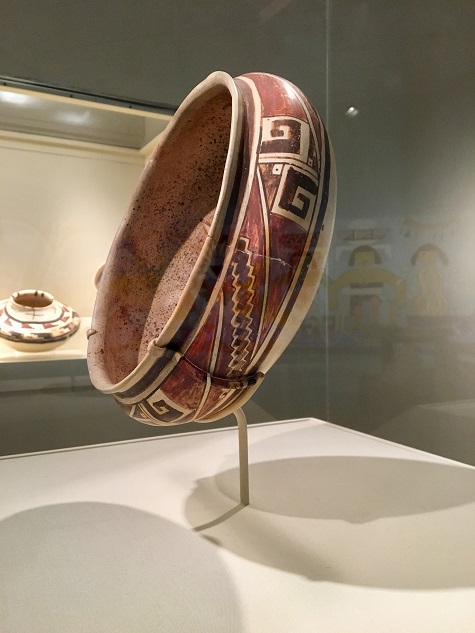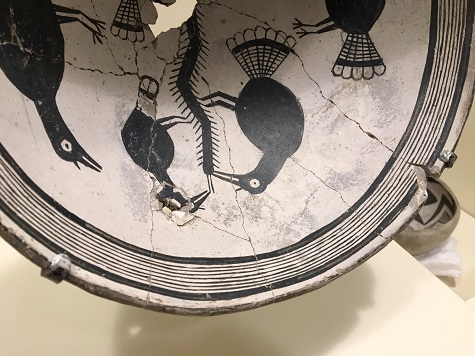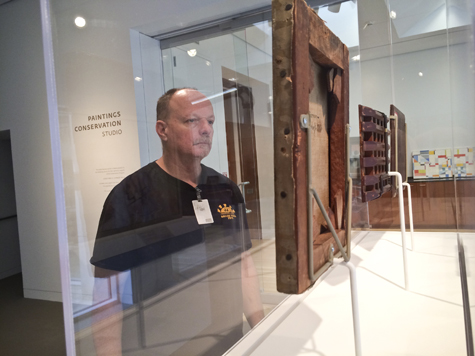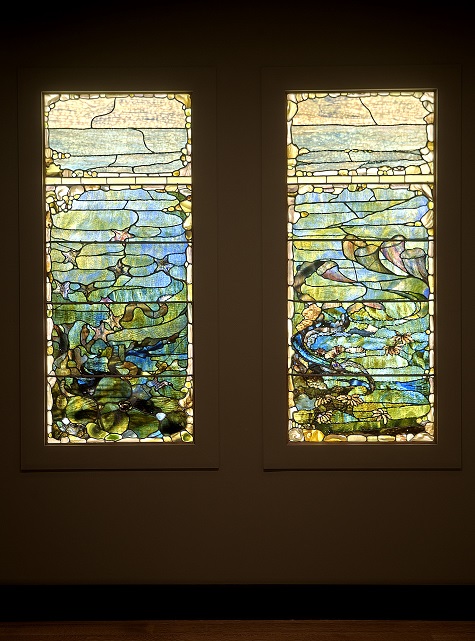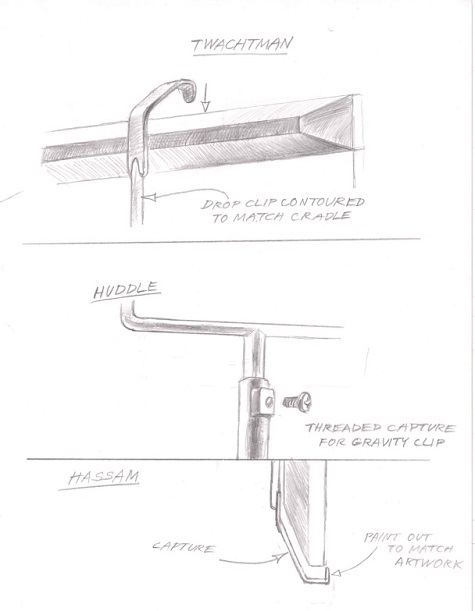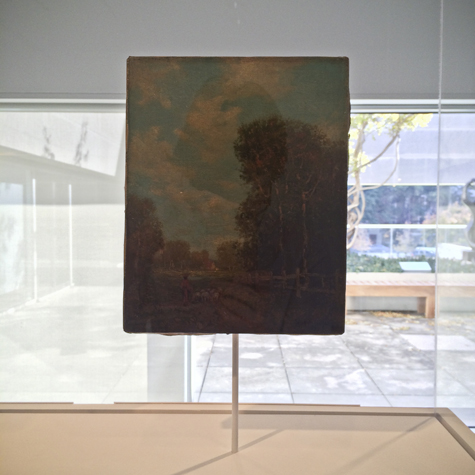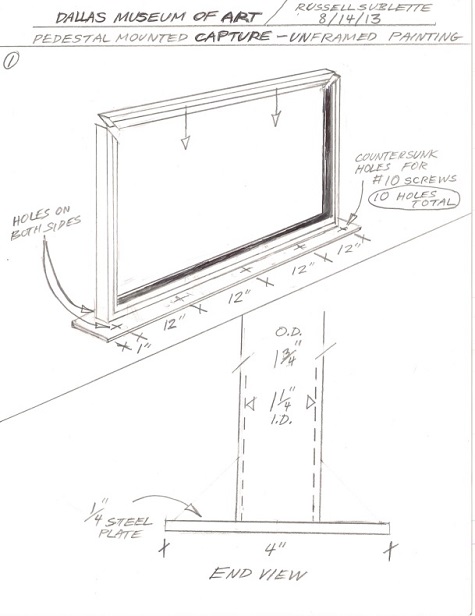Hopi Visions: Journey of the Human Spirit is a new year-long exhibition highlighting a forty-eight foot mural by Hopi artists Michael Kabotie and Delbridge Honanie. The mural, titled Journey of the Human Spirit, depicts the history of the Hopi people from their mythic emergence to modern day. Included in the installation are numerous works from the DMA’s permanent collection, carefully curated to enhance and highlight the story told by the mural. Many of the objects included are ceramics ranging in dates from 950 CE to the late 20th century. As can be expected with such a range of dates, the condition of the objects varies from pristine to reassembled fragments. A question that must be answered prior to installing works like these is how to best display the work while not compromising its structural integrity. This problem is often solved by building specialty mounts.
A mount is a support, backing, or setting on which an object is fixed for display purposes. There are multiple types of mounts, but the one utilized most for Hopi Visions is a custom built brass mount. Russell Sublette, who just celebrated his 39th year at the DMA, is a Senior Preparator and the Head Mount Maker at the Museum. He is responsible for the majority of mounts you see (or rather, don’t see) within the permanent collection displays.
During exhibition planning, the curator and designer work together to determine how they wish to display an object. Do they want to show a bowl placed flat on a surface in a way that reflects its utilitarian purpose or do they want to display it at an angle to better highlight the design on the interior? Once these decisions have been reached, it is up to Russell to turn these wishes into a reality. He carefully inspects the object, looking for fractures, breaks, and any other issues that might affect its structural integrity, in order to determine the best contact points between the mount and the object. He then takes measurements and works on design. Russell’s goal is to create a mount that provides maximum stability while maintaining a minimal profile. In other words, the mount needs to be as invisible as possible. It is a job that requires focus and precision.
Russell begins with long rods of brass that he cuts down and shapes to follow to contour of the object. He uses extreme care when working on the clips—the part of the mount on which the object rests. It is imperative that the clips do not put too much pressure on the object as that could lead to cracks and breakage. Once he has completed the fabrication of the mount, Russell hands it over to fellow preparator, Sean Cairns, for the finishing touches. Sean’s job is to make the visible parts of the mount disappear. He paints the mount to match the object’s design as closely possible, layering colors and making sure to inspect the piece from multiple viewpoints. When Sean’s work is done, the mount should blend seamlessly with the object.
A good mount maker is a great asset to any museum. Mount making requires skill, talent, and artistic abilities, all of which abound in Russell and Sean. So, when you visit Hopi Visions, please appreciate the objects on display, but then take an extra moment to appreciate the mounts that support the art.
Katie Province is the Assistant Registrar for Collections and Exhibitions at the DMA
